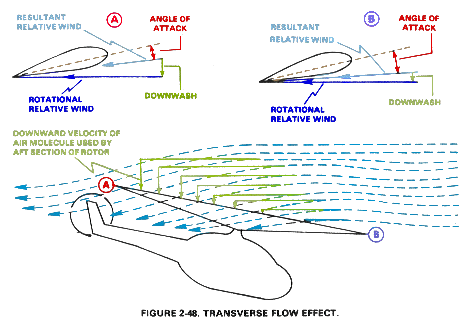

The downward flow at the rear of the rotor disk causes a reduced angle of attack, resulting in less lift. Increased angle of attack and more lift is produced at the front portion of the disk because airflow is more horizontal. These differences between the fore and aft parts of the rotor disk are called transverse flow effect. They cause unequal drag in the fore and aft parts of the disk resulting in vibrations that are easily recognizable by the pilot. The vibrations are more noticeable for most helicopters between 10 and 20 knots.